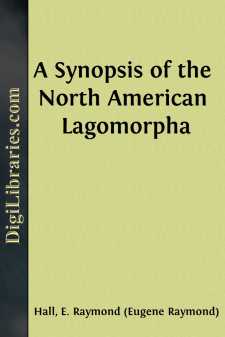Categories
- Antiques & Collectibles 13
- Architecture 36
- Art 48
- Bibles 22
- Biography & Autobiography 813
- Body, Mind & Spirit 142
- Business & Economics 28
- Children's Books 17
- Children's Fiction 14
- Computers 4
- Cooking 94
- Crafts & Hobbies 4
- Drama 346
- Education 46
- Family & Relationships 57
- Fiction 11829
- Games 19
- Gardening 17
- Health & Fitness 34
- History 1377
- House & Home 1
- Humor 147
- Juvenile Fiction 1873
- Juvenile Nonfiction 202
- Language Arts & Disciplines 88
- Law 16
- Literary Collections 686
- Literary Criticism 179
- Mathematics 13
- Medical 41
- Music 40
- Nature 179
- Non-Classifiable 1768
- Performing Arts 7
- Periodicals 1453
- Philosophy 64
- Photography 2
- Poetry 896
- Political Science 203
- Psychology 42
- Reference 154
- Religion 513
- Science 126
- Self-Help 84
- Social Science 81
- Sports & Recreation 34
- Study Aids 3
- Technology & Engineering 59
- Transportation 23
- Travel 463
- True Crime 29
North American Yellow Bats, 'Dasypterus,' And a List of the Named Kinds Of the Genus Lasiurus Gray
Description:
Excerpt
INTRODUCTION
Yellow bats occur only in the New World and by most recent authors have been referred to the genus Dasypterus Peters. The red bats and the hoary bat, all belonging to the genus Lasiurus Gray, also occur only in the New World except that the hoary bat has an endemic subspecies in the Hawaiian Islands.
The kind of yellow bat first to be given a distinctive name was the smaller of the two species that occur in North America. It was named Nycticejus ega in 1856 (p. 73) by Gervais on the basis of material from the state of Amazonas, Brazil, South America, but was early recognized as occurring also in North America (in the sense that México and Central America, including Panamá, are parts of North America). More than 40 years elapsed before subspecific names were proposed for the North American populations; Thomas named Dasypterus ega xanthinus in 1897 (p. 544) from Baja California, and Dasypterus ega panamensis in 1901 (p. 246) from Panamá.
The larger of the two North American species was named Lasiurus intermedius in 1862 (p. 246) by H. Allen on the basis of material from extreme northeastern México. Another alleged species, Dasypterus floridanus, was named in 1902 (p. 392) by Miller from Florida, but as set forth below it is only a subspecies of L. intermedius, a species that is seemingly limited to parts of the North American mainland and Cuba.
A third species, Atalapha egregia, allegedly allied to the small yellow bat, L. ega, was named in 1871 (p. 912) by Peters from Santa Catarina, Brazil, but Handley (1960:473) thinks that L. egregius is allied instead to the red bats. The species L. egregius has not been studied in connection with the observations reported below.
Bats of the genus concerned were given the generic name Nycteris by Borkhausen in 1797 (p. 66), and the name Lasiurus by Gray in 1831 (p. 38). For much of the latter part of the 19th century the generic name Atalapha proposed by Rafinesque in 1814 (p. 12) was used because it antedated the name Lasiurus. In this period Harrison Allen (1894:137) raised to generic rank the name Dasypterus that had been proposed by Peters in 1871 (p. 912) only as a subgenus for the yellow bats. Since 1894 the yellow bats ordinarily have borne the generic name Dasypterus. The red bats and the hoary bat continued to be referred to as of the genus Atalapha until early in the 20th century when it was decided that a European bat of another genus was technically the basis for the name Atalapha. Thereupon Lasiurus was again used in the belief that it was the earliest available name for the bats concerned. But in 1909 (p. 90) Miller showed that the name Lasiurus was preoccupied by Nycteris Borkhausen, 1797 (p. 66). From 1909 until 1914 in conformance with the Law of Priority Nycteris was used for the red bat and the hoary bat.
At this point it is desirable to digress and indicate why and how the Law of Priority came into being. In the 19th century different technical names were used for the same kind of animal depending on the opinions of individual authors....












